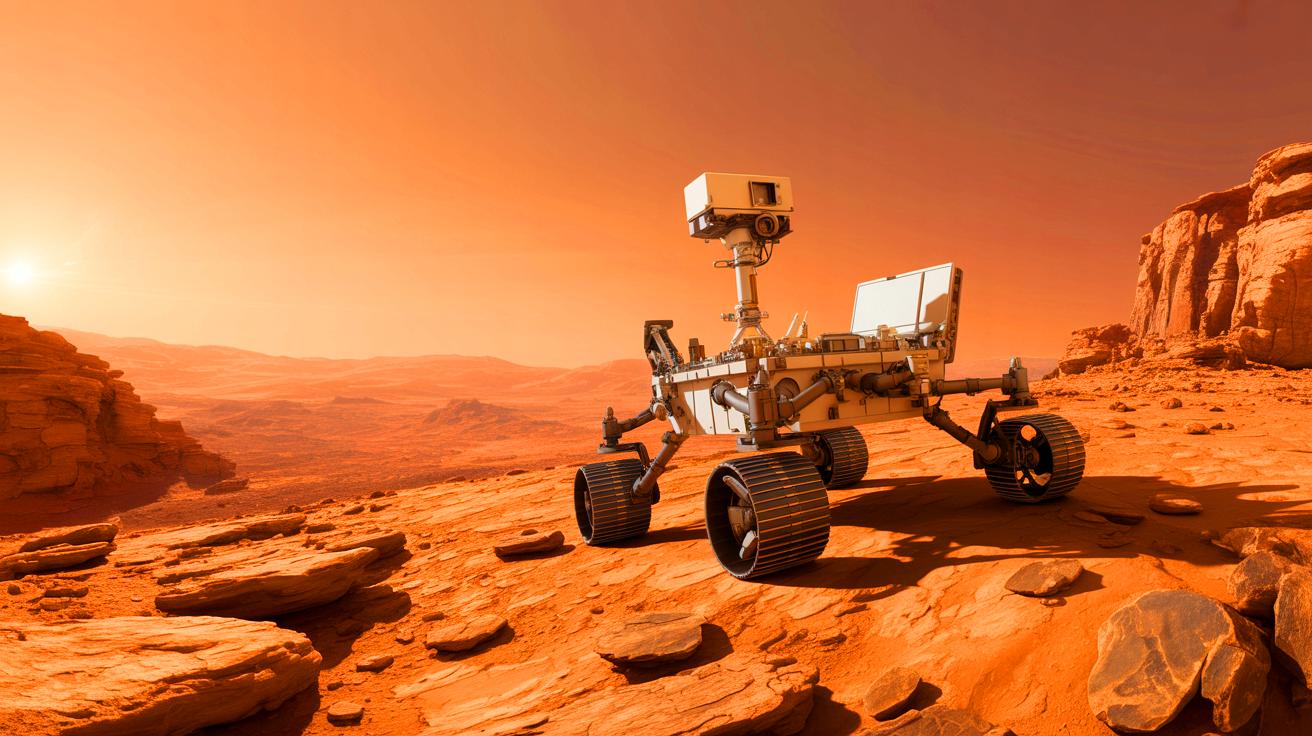IN A NUTSHELL
🔍 NASA’s rovers have discovered ancient riverbeds and minerals, indicating Mars’s past had water-rich environments.
🪨 Detailed analysis of Martian rock formations reveals potential signs of habitable conditions in the past.
🧬 The detection of organic molecules on Mars raises the possibility of past microbial life, sparking scientific excitement.
🚀 Future Mars missions aim to return samples to Earth, advancing our understanding of the Red Planet‘s history and habitability.
NASA’s exploration of Mars has long piqued human curiosity, raising questions about the possibility of life on the Red Planet. Mars rovers, equipped with advanced scientific instruments, have been crucial in collecting data from the Martian surface. These robotic explorers traverse the harsh environment, analyzing rock formations and soil samples with the hope of uncovering evidence that Mars might once have harbored life. Recent findings have brought new insights and challenges, sparking debates among scientists and enthusiasts alike. As we delve into the discoveries made by these rovers, the question of whether life ever existed on Mars takes on new dimensions, inviting further exploration and curiosity.
Unveiling the Martian Landscape
The Martian terrain has always been a subject of intrigue. NASA’s rovers have provided invaluable images and data, painting a detailed picture of the planet’s surface. The landscape is dotted with ancient riverbeds, vast plains, and towering volcanoes, suggesting a dynamic geological history. These features hint at the past presence of water, a critical ingredient for life as we know it. By analyzing rock samples, rovers have detected minerals that form in the presence of water, such as clays and sulfates. These findings suggest that Mars was once a wetter planet, possibly capable of supporting life.
The discovery of these minerals has reshaped our understanding of Mars, highlighting the planet’s potential to have been habitable in the past. The implications of these findings extend beyond mere scientific curiosity, as they challenge our understanding of life’s potential in the universe. As researchers continue to study the Martian landscape, they hope to uncover more clues about the planet’s history and its capacity to harbor life.
Analyzing Rock Formations
One of the most significant tasks of Mars rovers involves the detailed analysis of rock formations. By using tools like drills and spectrometers, these machines can gather information about the composition and age of Martian rocks. This data provides insights into the planet’s geological past, including volcanic activity and erosion processes. The presence of certain isotopes within rock layers can also indicate past environmental conditions, such as climate and atmospheric changes.
Recent missions have focused on areas where water is believed to have existed in abundance. In these regions, rovers have found evidence of sedimentary rocks, similar to those formed in Earth’s water-rich environments. This discovery is critical as it suggests that Mars may have had environments capable of supporting microbial life. The challenge now lies in determining whether these conditions were stable enough over time to allow life to develop and thrive.
Signs of Ancient Life?
While no definitive evidence of life has been found, the rovers’ findings have offered tantalizing hints. Organic molecules, which are the building blocks of life, have been detected in some rock samples. These molecules could have been formed through non-biological processes, but their presence raises the possibility that life could have emerged on Mars under the right conditions.
“The detection of organic molecules is a game-changer in our quest to understand Mars’s potential for life,” said a leading scientist involved in the mission.
This discovery has fueled interest in returning more sophisticated instruments to Mars to further analyze these findings. As researchers continue to study these molecules, they hope to unravel the mystery of their origin and what they might reveal about Mars’s potential to support life.
The Future of Mars Exploration
NASA’s ongoing missions to Mars aim to build on the discoveries made by rovers. Future missions will focus on drilling deeper into the Martian surface and returning samples to Earth for more detailed analysis. This ambitious plan involves international collaboration and cutting-edge technology to overcome the challenges of interplanetary exploration.
As we look to the future, the possibility of human missions to Mars adds another layer of complexity and excitement. The prospect of sending astronauts to Mars raises questions about the logistics of such missions, including how to sustain life on the planet’s surface. These endeavors promise to expand our understanding of Mars and its capacity to support life, ultimately bringing us closer to answering the age-old question: Are we alone in the universe?
As NASA’s Mars rovers continue their exploration, each discovery adds a piece to the complex puzzle of Mars’s history and its potential to host life. The findings have sparked new questions and debates, encouraging scientists to look deeper into what these discoveries mean for our understanding of life beyond Earth. As exploration progresses, one must wonder: Will we ever find definitive proof of life on Mars, or will the Red Planet remain an enigma in our quest for cosmic understanding?
This article is based on verified sources and supported by editorial technologies.
Did you like it? 4.5/5 (24)

